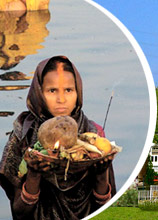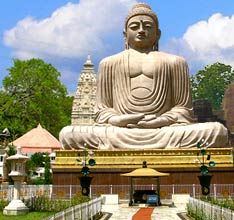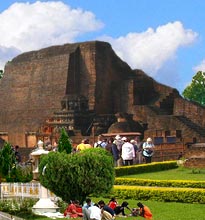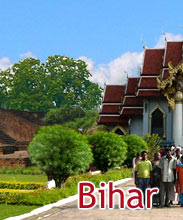 Munger has always served as a travelerís paradise, with its rich religious and historical inheritance. According to the Mahabharata, Munger was ruled by the great warrior Karna. The city serves as a real retreat to the soul of a visitor, with a long list of the historical monuments that depict some of the best Mughal architecture. Munger exhibits a unique blend of the various Indian and Mughal cultures. The place is an enchanting cosmos of countryside beauty, traditional monuments, magnificent shrines and a spirited culture. People visiting the place are enticed by the enthralling beauty of its tourist attractions. Read on to get information on the places to see in Munger.
Munger has always served as a travelerís paradise, with its rich religious and historical inheritance. According to the Mahabharata, Munger was ruled by the great warrior Karna. The city serves as a real retreat to the soul of a visitor, with a long list of the historical monuments that depict some of the best Mughal architecture. Munger exhibits a unique blend of the various Indian and Mughal cultures. The place is an enchanting cosmos of countryside beauty, traditional monuments, magnificent shrines and a spirited culture. People visiting the place are enticed by the enthralling beauty of its tourist attractions. Read on to get information on the places to see in Munger. Munger Fort
One of the most important monuments at Munger is the ancient fort. This monument has been built in a rocky ambience, projecting into river Ganges. Its barricade has four gateways, one on each side. Of all the gates, only the northern gate, called Lal Darwaza, is a bit preserved, with some carved stones built into it, which initially belonged to some Hindu or Buddhist structure. All the others are now mostly into ruins, but still worth seeing.
Tomb of Pir Shah Nufa
Tomb of Pir Shah Nufa is located inside the southern gate of Munger Fort, on the top of a small mountain, about 25 inches high, which symbolizes the ruins of some Buddhist structure. The structure of the tomb consists of a domed tomb chamber, with a prayer room or mosque and a rest room attached to it.
Palace of Shah Suja
Palace of Shah Suja is considered to be one of the finest sites in Munger Fort and has now been transformed into a jail. To west of the jailorís office is a roofless hammam or Turkish bath, consisting of a bathroom and a dressing room. To the west of the hammam, outside the palace, is a large well, now bricked up, which was linked with the river by a door.
Tomb of Mulla Muhammad Said
Tomb of Mulla Muhammad Said is located on the top of the mainstay, at the southwest angle of Munger Fort. The Mulla was a Persian poet and had come to India from Mazandran near the Caspian Sea, during the reign of the Emperor Aurangazeb, who engaged him as a tutor to his daughter Zibunnisa Begum. He died in 1704 A.D. and his tomb existed until the early years of this century, when it was demolished and the grave removed.
Rameshwar Kund
Rameshwar Kund is situated on the northwest corner of the Kharagpur Lake. The origin of the lake has a legend associated with it. According to that ,during the Muslim invasion, one of the Generals camped at this site and dug the earth for water and by chance, a hot water spring came out.
Ha-Ha Punch Kumari
It is a waterfall originating from the hills and boasts of a straight drop. TIt is situated at the western side of Rameshwar Kund. This fall is named after the five daughters of a Hindu King of Kharagpur, who committed suicide by jumping from the peak of the hill, to escape capture by Muslim aggressors. The waterfall is endowed with immense natural beauty.
Kashtaharni Ghat
Kashtaharni Ghat is the place where river Ganges takes a bend and moves towards north, becoming Uttar-Vahini. It is because of this fact only that this particular ghat holds significance for the Hindus. History mentions Govind Chandra of Kannauj made a grant after bathing in the Ganges at Mudgagiri, on the occasion of Akshaya Tritiya festival, making its origin quite antique.
Rock carving
There is a rock carving situated at a distance of about 1 km from the Munger fort and is known by the locals as ' Manpatthar'. The rock has been adorned with a carving that is supposed to be nothing more than the impressions of the feet of Lord Krishna. It is said that He touched the rock while crossing the Ganges.










